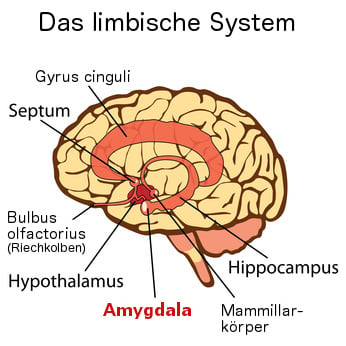Fear of heights is nothing unusual
 Humans are land creatures, so by nature they like to avoid higher altitudes. If, in the face of a deep gorge, this person becomes afraid of heights and dizziness, there is an understandable reason for this. After all, fear is supposed to warn us of risks, such as the danger of falling. This thus saves us from venturing further and keeping a safe distance from the abyss.
Humans are land creatures, so by nature they like to avoid higher altitudes. If, in the face of a deep gorge, this person becomes afraid of heights and dizziness, there is an understandable reason for this. After all, fear is supposed to warn us of risks, such as the danger of falling. This thus saves us from venturing further and keeping a safe distance from the abyss.
The fear of heights thus has a comprehensible biological basis. Specifically, this is distance vertigo or altitude vertigo, which occurs due to destabilization of posture when the distance between our eyes and the nearest visible solid object is too great. The body can no longer stabilize itself in this case. Our head has to sway a bit in order to see the distant object sharply. At the same time, the entire body sways along in the absence of lateral fixed points due to positional reflexes. Intense swaying in an exposed location is associated with increased risk of falling due to feared loss of control. This triggers a reflexive reaction in the brain, resulting in the release of the stress hormones norepinephrine and epinephrine and causing fear of heights. This results in vertigo, one of two categories of fear of heights.
The other category is represented by fear of falling, also known as the cliff phenomenon. This fear of falling is innate and not necessarily linked to negative experiences.
When fear pulls the rug out from under your feet
We owe these fears, which serve as an alarm system, to our ancestors, who were only able to prevent the crash in certain situations if they reacted quickly. The fear of heights thus represents a biological primal instinct, which in most cases is ordinary and harmless. A queasy feeling and a certain restlessness are completely normal here. In everyday life, most people can often cope quite well with a fear of heights, even if it is perceived as annoying and an overwhelming hindrance in some areas of life.
However, if the fear of heights takes on an inexplicably and irrationally high level, to which those affected react with panic or extreme heart palpitations, this fear can be very stressful and take on pathological characteristics. Typical symptoms(anxiety symptoms) of extreme fear of heights include shortness of breath, extreme dizziness, trepidation, and panic attacks. In this case, life is severely constricted and impaired. The pathological form is called acrophobia: see also ICD-10; F40.2.
This information is sufficient for those of us who do not need to move regularly on elevated objects. Nevertheless, fear of heights is enough to spoil the planned ski vacation (Alpine ski). The view from the 3000m mountain top followed by a descent can be a pleasure that you may not want to miss.
So how do we get rid of our fear of heights or reduce the fear response to a tolerable and functional level?
A very good chance to get a grip on one’s own (non-sick) fear of heights is offered by self-coaching with EMDR. Get more information at Overcoming Anxiety in EMDR Self-Coaching with EMDR Goggles REMSTIM 3000.
How we can manage our fear

Overcoming fear in EMDR self-coaching with the EMDR goggles REMSTIM 3000
How we can unlearn our fears in self-coaching with EMDR and the EMDR glasses Remstim 3000. Fear reactions sometimes make themselves felt as quiet sensations, but more often than not,

Overcoming fear in EMDR self-coaching with the EMDR goggles REMSTIM 3000
How we can unlearn our fears in self-coaching with EMDR and the EMDR glasses Remstim 3000. Fear reactions sometimes make themselves felt as quiet sensations, but more often than not,










